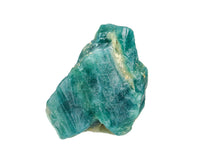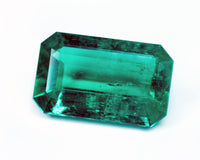- 1. Diamond
- 2. History and Meaning of Diamond
- 3. Physico-Chemical Properties of Chrysoprase
- 4. Colors of Diamonds
- 5. Diamond Value
- 6. Diamond Healing Properties
- 7. Diamond Metaphysical Properties
- 8. Diamond for Sale by Kenkengems
Diamond
They say that diamond is a girl’s best friend. If girls enjoy shimmer, glamour, and luxury then yeah, diamonds are indeed their best friends. In today’s post, you can find out what other virtues of the world’s hardest mineral are and why it had been overlooked for millennia.

History and Meaning of Diamond
‘Diamond’ is a distorted ancient Greek word ‘adamas’ meaning invincible or irresistible. At first, adamas wasn’t applied to precious stones. Greek chroniclers used it to describe strong metals and alloys (particularly steel) that seemed indestructible compared to bronze. The first mention of the term as the name of a diamond is found in the works of Mark Manilius, a Roman poet and astrologist who lived in the 1st century AC.
That being said, the first descriptions of the gems that were presumably diamonds date back to the 4th century BC. Found in India, they failed to stir interest. That's because rough diamonds are unremarkable: they are gray and as if covered with a thin crust. On the other hand, these stones gained popularity as a talisman. Hunters had diamond talismans to ensure they don’t come back home empty-handed. Along with that, historical chronicles preserved other purposes of the stone: it protected travelers from wild animals and robbers as well as gave soldiers courage in battle. Pliny the Elder in his Natural History mentioned that diamonds had been used as tools.
By the 13th century, our ancestors learned to cut diamonds (before that they were polished en cabochon). Still, not that many stones received cutting because people believed it would diminish their magical properties. The first faceted diamond was made in 1454 by Louis de Bernel. The jeweler cut it for the Duke of Burgundy, Charles the Bold, who used it to embellish his armor. Agnes Sorel, the mistress of the French king Charles VII, made diamonds the in thing for social events. Since the French were trendsetters at the time, diamond mania spread throughout Europe. Nevertheless, these stones were the prerogative of the rich and noble, since Europe did not have large deposits, and diamonds were brought from India and Indonesia.
Diamond deposits found in Kimberley (South Africa) in the second half of the 19th century marked the beginning of a glorious new chapter in the history of diamonds. The discovery of kimberlite pipes (vertical diamond fields formed during volcanic eruptions) and the successful advertising campaign of De Beers made diamonds a sought-after asset for every woman.

Physico-Chemical Properties of Diamonds
Surprisingly, of all gemstones, diamonds have the simplest chemical composition – they are almost entirely comprised of carbon. To be more exact, the majority of jewelry-grade specimens feature 99.8% of carbon and the remaining 0.2% are admixtures.
The most prominent feature of a diamond is its incredible hardness. The Mohs mineral hardness scale recognizes diamonds as the hardest – they score the maximum possible 10 points. That being said, this scale is relative and implies that harder minerals can scratch softer ones. However, if we look at absolute hardness values, diamonds are even more impressive. Corundum, which is only one point behind diamond on the Mohs scale, is actually 150 times softer than its precious cousin. Thus, the diamond is the hardest among all natural and artificial materials.
There is a popular belief that ultra-hard diamonds are impossible to break. In fact, hardness makes them resistant to abrasion. At the same time, diamonds are quite brittle and a strong hit can easily split them exposing their conchoidal fracture.
One more amazing property of a diamond that distinguishes it from the pack is a high refractive index (from 2.417 to 2.421), this is the highest value among all gemstones. It is the high refraction that gives faceted stones their statement brilliance.

Colors of Diamonds
When it comes to colors, diamonds deprived of admixtures are perfectly clear and colorless. Such specimens are extremely rare. More often than not, diamonds have some kind of tint - blue, yellowish, brown, etc.
Diamonds that boast a pronounced color (as opposed to an unwanted tint) make up only 1% of the total number of all stones mined. Canary yellow, green, mauve, pink, and blue crystals are highly prized among gem connoisseurs and experts. The rarest are red clear stones - gemstone auctions offer only a few specimens boasting this color per year. The most valuable among colored diamonds are purple stones - they are so unique that their price often exceeds $1 million per carat.
It’s worth mentioning black diamonds. For a long time, they had been considering a waste product of the extraction of colorless stones. Today, however, black diamonds have cemented their status as trendy and chic gems.
The color of diamonds is rarely uniform. The same stone can carry zones of lighter or more intense coloration.

Diamond Value
Diamonds are well known for their hefty prices. However, the price of jewelry-grade stones starts from just a few dozen dollars per carat. Simultaneously, the value of flawless and rare stones goes through the roof (a million dollars per carat isn’t something extraordinary).
Each diamond specimen is unique and is assessed according to the scale of the Gemological Institute of America (GIA). The scale known as 4C considers such parameters as color, clarity, carat weight, and cut. The main GIA scale evaluates only white (colorless) diamonds and deems yellow, brown, etc. tints as flaws. Diamonds of fancy colors are assessed according to a different scale.
One of the fundamental characteristics of diamonds is their clarity. It determines the amount and color of foreign inclusions in a cut diamond, fractures, and the degree of transparency. If a sample has no inclusions whatsoever, it belongs to FI or IF Clarity category (Flawless or Internally Flawless). Such diamonds are thin on the ground and most jewelry-cut gems have some soft inclusions or cloudy areas. The most common inclusions vary through graphite, ilmenite, magnetite, garnet, malacolite, etc. A large number of dark and visible to the naked eye inclusions brings down the price of the stone (jewelers use the tern pique to describe such specimens). Because of inclusions, multi-carat diamonds can cost significantly cheaper than 1-carat counterparts.

Diamond Healing Properties
It is believed that a diamond obtained in an honest way (especially as a gift) beneficially affects its owner. In particular, it is able to help harmonize its flows of energy.
Adherents of lithotherapy (mineral therapy) and traditional Chinese medicine highly appreciate the medicinal properties of diamonds. They believe that the most precious of all gems improves the functioning of the cardiovascular system and gastrointestinal tract, along with facilitating metabolic and excretory processes. Besides, it helps combat stress, insomnia and nervous ailments, as well as promotes vitality.
At the same time, lithotherapists warn that you shouldn’t wear diamonds all the time. If you overuse the mineral, it may turn you aggressive and cruel. Or, on the contrary, you might descend into the abyss of depression.

Diamond Metaphysical Properties
A diamond is a powerful amulet stone protecting against evil forces and enhancing the energy of its owner. Along with that, diamonds, especially yellow ones, are often used in occult ceremonies: they are supposed to reveal the hidden, endow with the gift of foresight, and open doors to the astral worlds.
In medieval legal proceedings, diamonds played the role of a lie detector: if a defendant was guilty, a stone dimmed and if they were innocent, it shone even brighter. A woman in labor received a diamond to facilitate the process. Babies from noble families were showered with tiny diamonds to ensure that they grow up healthy and happy.
The color of a diamond is also responsible for its metaphysical properties:
• White diamond strengthen the positive traits of one’s personality, level the shortcomings, as well as safeguard against the intrigues of enemies.
• A yellow diamond is a stone of spiritual self-improvement and knowledge of the truth. It is able to enhance intuition and helps to foresee the future.
• A green diamond is capable of eradicating ailments, giving healthy offspring, rewarding with longevity and good mood.
• Blue diamonds promote devotion and purity of thoughts, as well as bring good luck and inner balance.
• Red and pink stones help find true love and fidelity, and ladies can benefit from their ability to boost charm.
• Black specimens activate leadership qualities, determination, and fortitude. Compatible with the Ying energy, they are an excellent choice for males.

Diamond Beads for Sale by Kenkengems
KenKenGems proof that diamonds don’t have to cost an arm and a leg. With our extensive selection of diamonds, you can get the hardest gemstone in the world at a surprisingly attractive price. Make sure to check out our one-of-a-kind faceted diamonds – they will become an excellent highlight for your jewelry as well as a statement piece of any gemstone collection. We also deliver loose diamonds, strands, charms, pendants, and many more. And if you appreciate the natural beauty of gems, we have rough diamonds in a multitude of colors.




